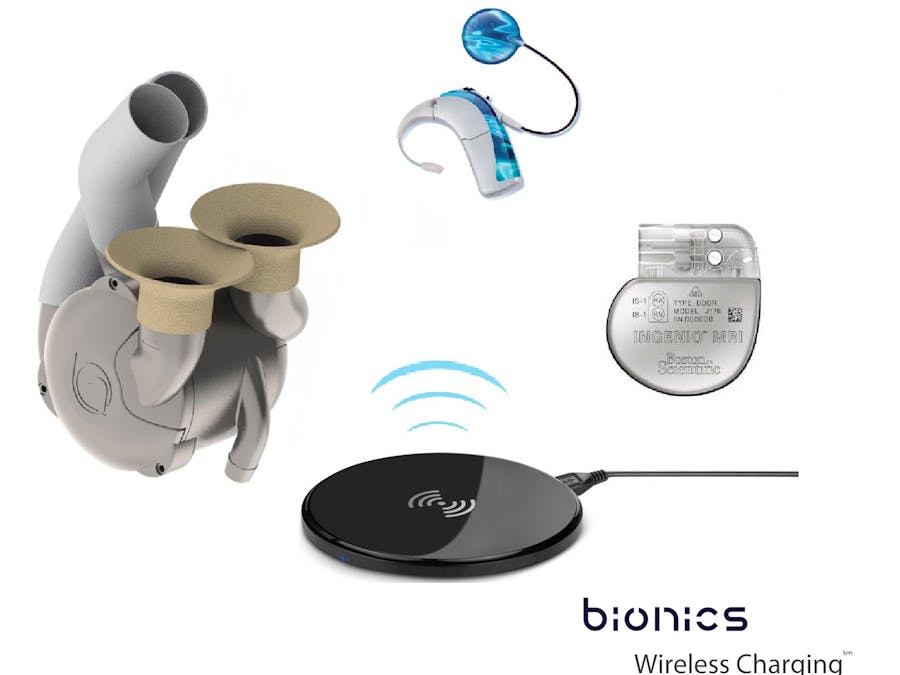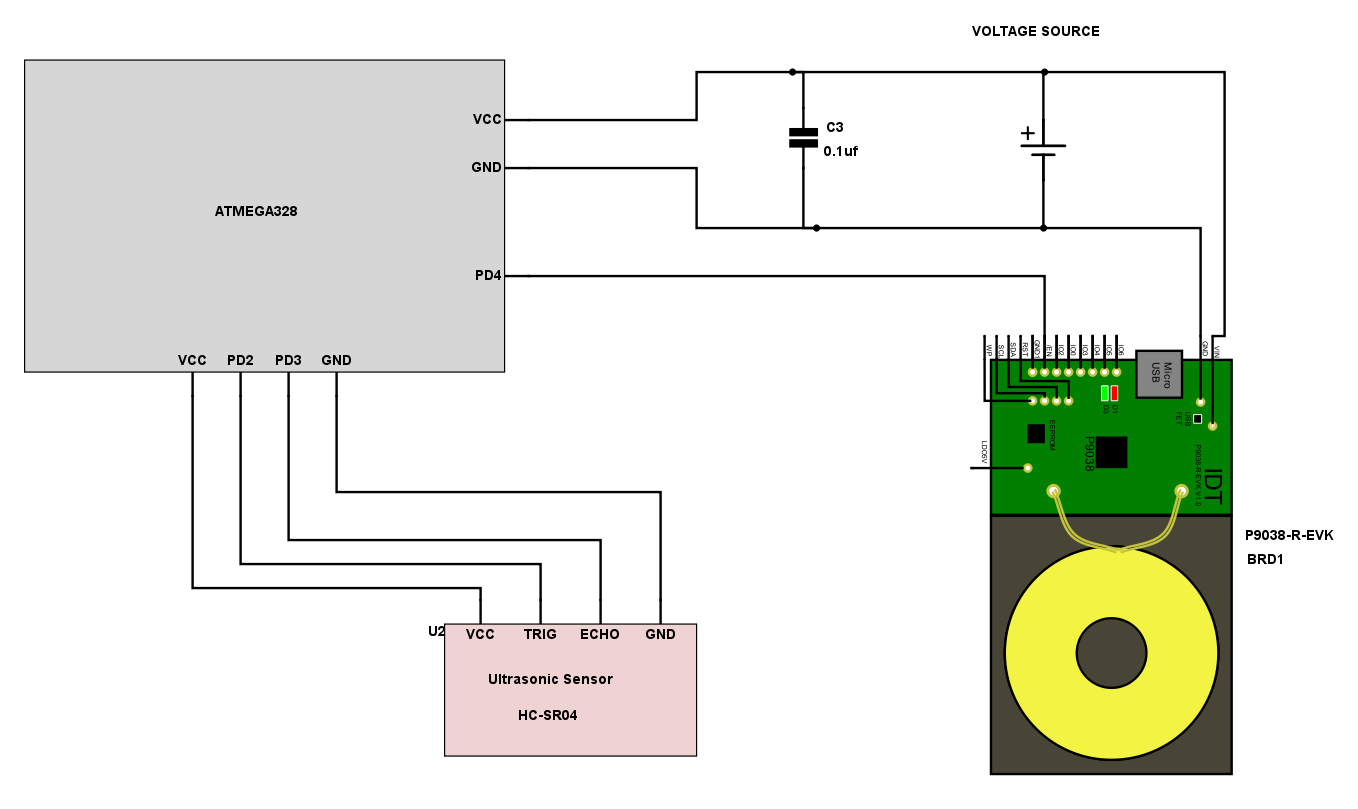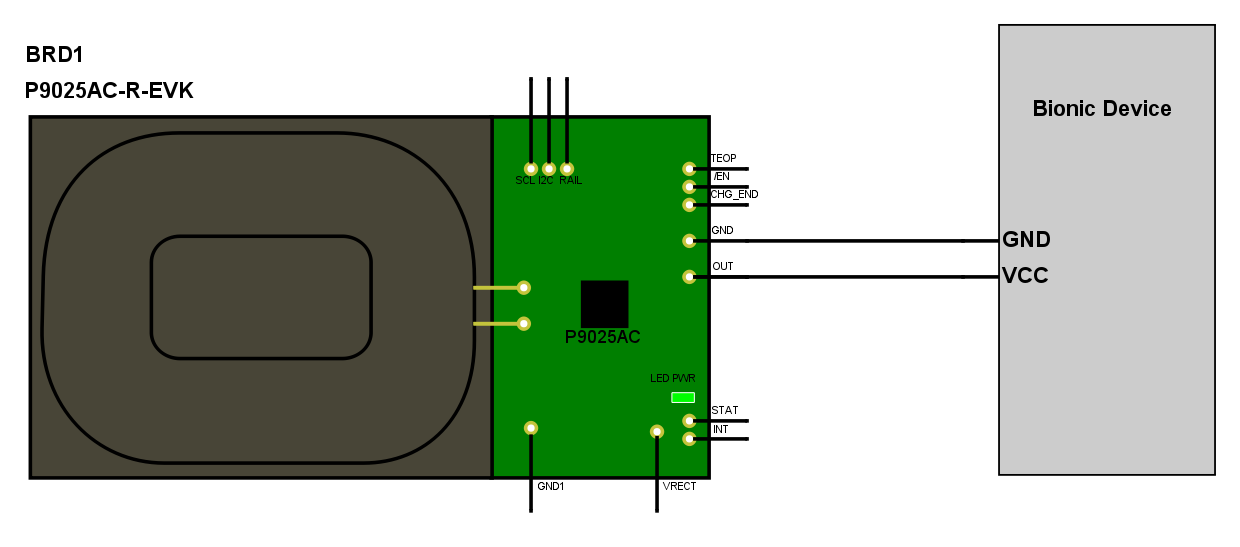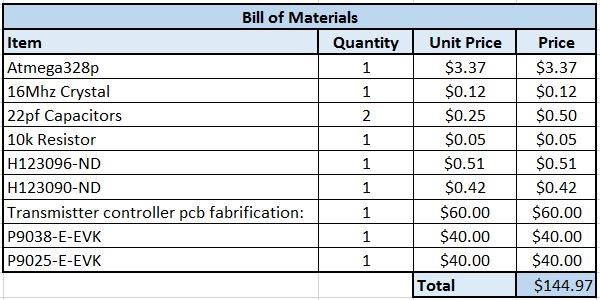Bionic devices/organs has a limited lifetime where its battery needs to be replaced in order for it to function continually. The limited battery life causes the patient to be subjected to an operation every time the battery life comes to its end. This puts the patient in great danger and discomfort. To solve this problem, wireless charging becomes a very crucial asset. If wireless charging is integrated with bionic organs/devices, the only operation the patient would undergo is to only implant a bionic organ/device. In my opinion, I think that this could be a life saver for humans in the future of electronics to come.
IDT's wireless Transmitter and the Receiver is a huge step forward for Electronics. It is small, compact and programmable. This provides the capability to custom build your own wireless power unit.
The wireless transmitter and receiver can be used in bio medical industry to take a huge leap forward. Using IDT's wireless power platform, bionic devices no longer needs to have batteries that needs to be running for years.
The bionic device can be charged wireless, performance can be monitored, and how much remaining charge it has. Not only IDT's wireless power a great product, but it can also be used as a lifesaver!
In this Project, it is focused on wireless charging of bionic devices inside human beings. Transmitter is controlled by an ATmega328 Micro-controller with an ultrasonic proximity sensor. Proximity sensor is used to activate transmitter only when the Receiver coil is present over the transmitter. This is done to save unnecessary power dissipation in the transmitter coil.
The Transmitter block diagram from Schemeit is shown below:
http://www.digikey.com/schemeit/#2sxs
The Receiver Side block diagram from Schemeit is shown below: http://www.digikey.com/schemeit/#2sxs
Method
Step 1Program the ATmega328. This can be done using an Arduino Uno R3 board. Inset the ATmega328 into the socket where the ATmega328 in the Arduino Uno R3 board is.
Open the Arduino cc. Use the Transmitter Controller code given below, compile and upload it to the board.
Remove the ATmega328 chip from the Arduino board and inset it to the transmitter board.
Step 2Connect the controller circuit to the IDT’s P9038-R-EVK wireless Power Transmitter Board as shown below
Connect the Bionic Device to the IDT's P9025AC-R-EVK Wireless Power Receiver Board as shown below.
The transmitter circuit must be sealed properly in surgical cover to be implanted on the lower back of the body of a person. Charging most suitable will be done when lying down facing upwards.
The charging system can be customized widely. At the receiver side, the receiver circuit can be programmed to request for a battery status and a working diagnostic from the bionic device. This can pre-identify if there is a problem in the bionic device, or whether the battery is dripping low before the bionic device shuts down. The system can provides extra care for the patient who's life depends on bionics.
Using wireless charging and communication through IDT wireless charging boards will reduce the power consumption that will be used if the bionic device and data is to be collected wireless using modes like WiFi or Bluetooth. This capability will take the bio-medical industry to another level, where devices can be implanted in humans to perform self-Screening.


















Comments
Please log in or sign up to comment.